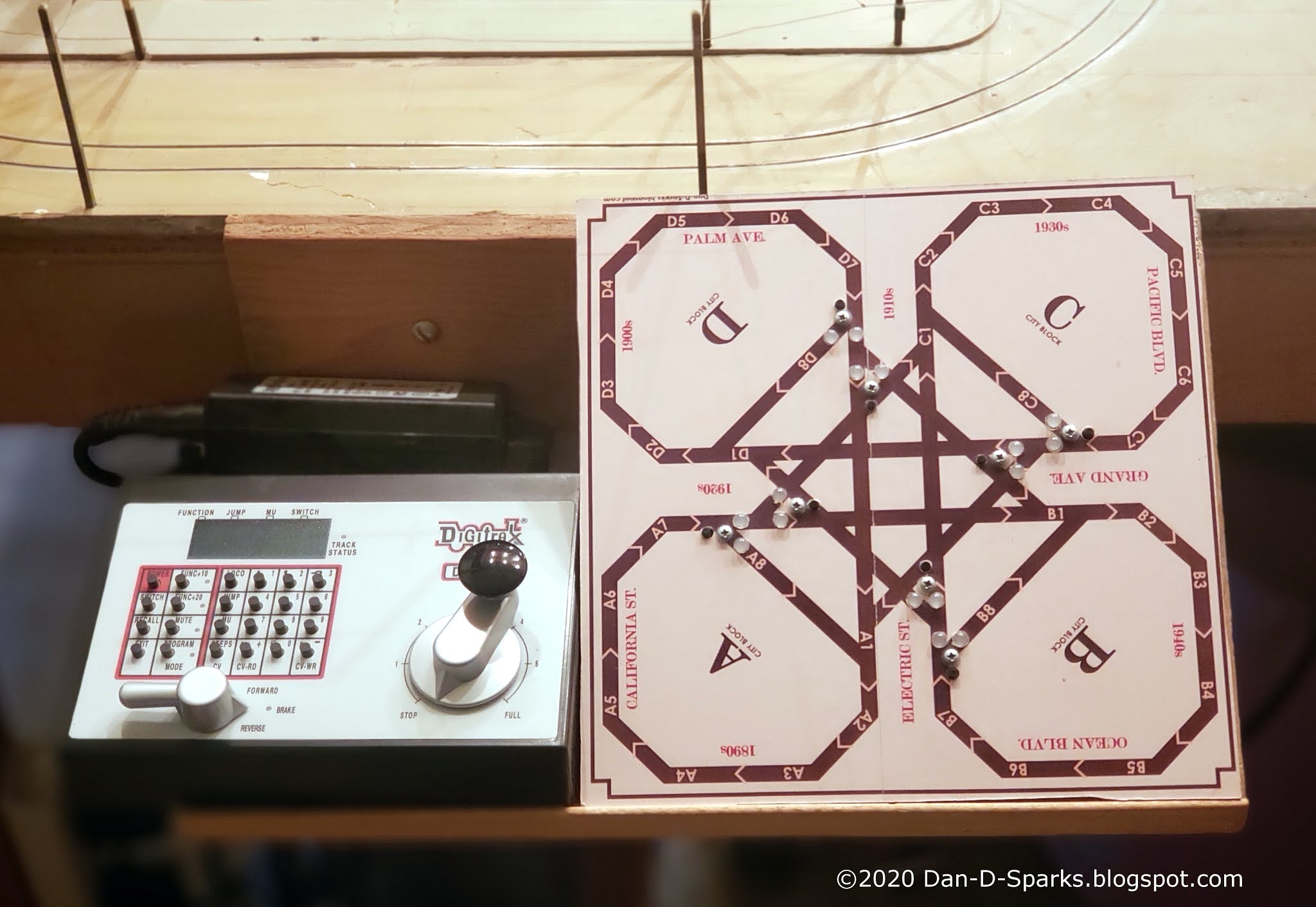

You can also use a "Y" to connect two servos to one output (works great for passing sidings!).īy adding the DCC stationary/accessory decoder to the Octopus you can control your turnouts with servos and DCC at the lowest possible cost per turnout. You can use "Y" cords to use more than one fascia controller to control one servo. This gives you a simple way to hook up the inputs to the board using servo-style cords and extensions. You can use the same fascia controllers as the Quad. Power input is any power supply from 5.0-24 volts DC. This means less heat and a lower power draw. The Octopus III has an on-board high-frequency switching 1.8A power supply that is more efficient than the old linear power supply. I was wondering if it was a bad idea to hot glue them to the underside of the plywood bench rather than buy a bunch of. The board also has jumpers for setting the range from +/-20 degrees around centre to +/70 degrees and for centring the servo to simplify installation for applications where there are no hard endpoints or where you are using the same turnouts in all locations. I am using SG90 servos connected to Tam Valley Octopus III controllers. With the Remote Aligner you can set the amount of force used in the automatic alignment to match your rail size and the servos you are using. This allows each servo to be adjusted to its optimum range and endpoints and each servo can be independently adjusted. The servo endpoints are found automatically by searching for hard endpoints or you can manually align them with the Remote Aligner. No more hanging under the layout trying to push buttons. The Remote Aligner (Sold Separately) allows you to stand by the turnout being aligned so you can precisely align the servo endpoints with ease. There are 8 positions for plugging in R/C type servos and 8 inputs for switches or 5V logic. Then try the toggle the way you got it to work - between pins 1 and 3 on the Octopus.The Octopus III can drive up to 8 servos to move turnouts or other devices on your layout controlled by a toggle switch, a momentary push button, the output of a signal system or a DCC decoder. WHere the picture has the wire fromt he bottom LED going to pin 1, the black - connect that wire to pin 2 instead. This differs slightly from the picture - the picture could be wrong. Cathode of LED1 to anode of LED 2 to red.

WHite to 330 ohm resistor to cathode of second LED. White to 330 ohm resistor to anode of one led. NO pusbutton connects black to white when pressed. I just grabbedone of mien to look at the circuit. It does briefly short the one LED to send the signal to the Octopus. The fascia controllers work the same way, except with a momentary pushbutton, and an extra resistor for a pullup somewhere. But since it's not given as an option, I think not. Now if it's the OTHER LED that should be on in that position, it might actually work. I don't think this will work though, since when the toggle is closed it will be shorting out the one LED. Next thign would be to connect LEDs to the Ocopus as shown in the lower right diagram in the wiring examples. But if you count 1-2-3 down oen side of the DPDT, and you have 1-2-3 on the switch conenction ont he Octupus, then you should have Octopus #1 to toggle #1, Octopus #3 to toggle #2. OK, sounds like you have the toggle right - using a DPDT is probably confusing you since it has more connections thant you need. No, the Octopus can operate with toggles - that's what the Mtr jumper is - momentary contact to trigger it or a fixed contact (toggle). I don't have one handy to look at to see where it goes. Maybe getting oen and looking at the circuit would help - it's much as I described above as somethign to try except there's an extra resistor.
#TAM VALLEY OCTOPUS III WITH ROCRAIL PLUS#
I'm guess it's possible, the fascia controllers work in a similar fashion although that s a pushbutton plus LEDs. Wiring LEDs AND a toggle, that's nto shown int he examples. The fascia controllers Duncan sells jus tplug in and work. It's when trying to figure out an alternate method of usign the device that you are pretty much on your own. I can see why he says "not for beginners" but using the deisnged components together isn t very difficult. I talked to one of the Motrak guys at Timonium, after the Springfield show - he said Duncan was at the Springfield show and cleaned him out of the servo mounts, they've been selling liek hotcakes. I know he's runnign behind these days trying to keep up with demand.
#TAM VALLEY OCTOPUS III WITH ROCRAIL TRIAL#
Or for $8 you can get 4 of the controllers made for it, with LEDs and a pushbutton.Īfter my first trial Singlet, I had some technical questions before I ordered more, and DUncan promptly answered my email. Take the Mtr jumper off, and wire the SPST toggle switch across pins 1 and 3 of the switch/LED connector. My best guess looking at the wiring examples would be to wire the LEDs as shown in the lower right diagream for two LED indicators.


 0 kommentar(er)
0 kommentar(er)
